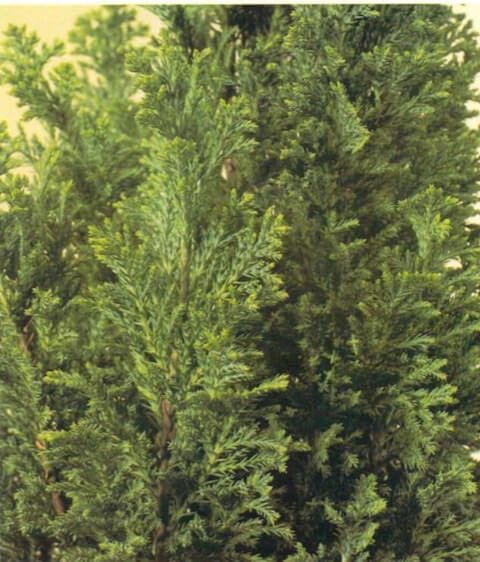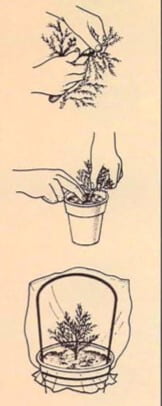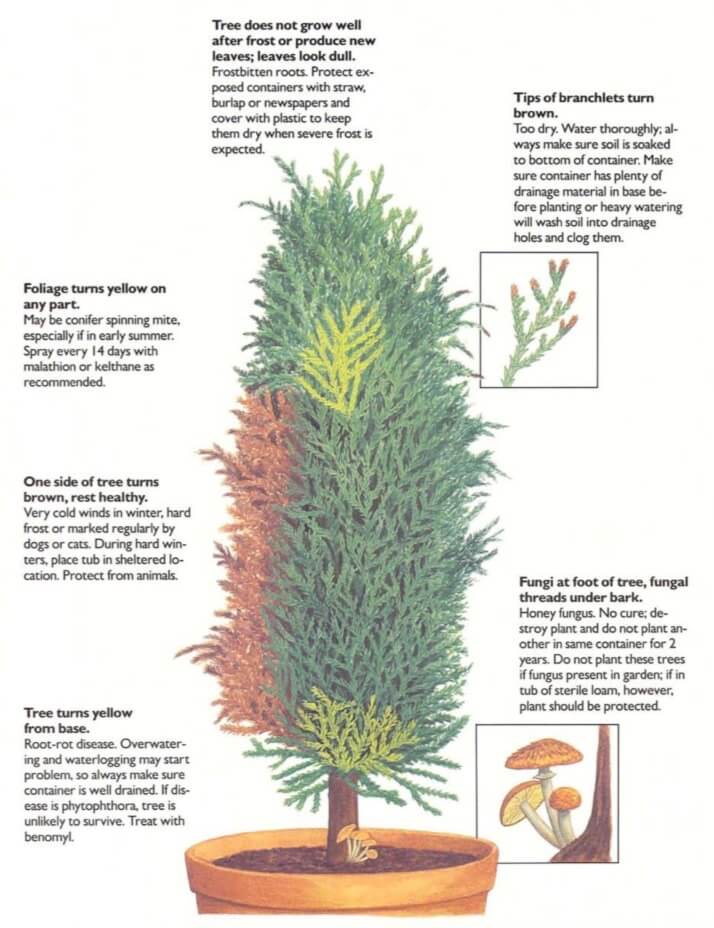[Ebook Việt Hoá] The Instant Guide to Healthy Houseplants (Hướng dẫn tức thời để chăm cây trong nhà khoẻ mạnh), Chi Chamaecyparis
[Ebook Việt Hoá] The Instant Guide to Healthy Houseplants: Chamaecyparis (Dwarf conifers, Falsecypress, Cypress, Cedar)
- Nguồn: [Ebook Việt Hoá] The Instant Guide to Healthy Houseplants (Hướng dẫn tức thời để chăm cây trong nhà khoẻ mạnh)
- Biên tập: Dũng Cá Xinh
- Biên dịch: Team Codai.net
English
Create a country forest no matter where you live with a grouping of these attractive conifers. Trees in this family vary in height from 2 feet (61 cm) to 200 feet (61 m) after 10 years’ growth, so it’s important to choose the right form for your container. Window boxes need dwarf trees. A very young dwarf tree will take many years to make a good display, however, and a larger one is costly; so buy a medium-growing species and move it when it gets too big. There is a wide choice suitable for balconies. Best times to plant are early to mid-autumn and early to mid-spring. Always plant new trees at the same depth as at the nursery, using soil line around trunk as a guide. Deeper planting encourages root disease. Conifers should not be pruned.

Light
Prefers lighter location but tolerates shade.
Temperature
Withstands most temperatures but may get brown patches from frost.
Water
Do not leave dry or plant in dry area Foliage will turn brown.
Humidity
Spray with hose or watering can in hot dry spells or long windy periods in spring and autumn.
Soil
Loam-based soil is best.
Feeding
Feed every 14 days at manufacturer’s recommended strength.
Propagation
Use cuttings. Seed is difficult to find and takes a long time to germinate.
Cultivars
Window boxes: obtusa ‘Nana’, lawsoniana ‘Minima aurea’, pisifera ‘Nana’. Balconies: lawsoniana ‘Fletcheri’, lawsoniana ‘Ellwood’s Gold’, pisifera ‘Bou- levard’, pisifera ‘Filifera aurea’. The latter make 3-5 ft (1-1 1/3 m) trees after several years. There are many others.
Cuttings
- 1. Cuttings can be taken at any time. Choose a branch about 4 inches (10 cm) long and cut cleanly. Trim end and dip in hormone rooting powder.
- 2. Prepare 3-in (9-cm) pot with seedling potting soil and insert branch about 1 1/2 inches (4 cm) into soil. Firm soil around base.
- 3. Water well and place in sealed plastic bag. Remove cover after 3 weeks.

What Goes Wrong

- Foliage turns yellow on any part: May be conifer spinning mite. especially if in early summer. Spray every 14 days with malathion or kelthane as recommended.
- One side of tree turns brown, rest healthy: Very cold winds in winter. hard frost or marked regularly by dogs or cats. During hard win- ters. place tub in sheltered lo- cation. Protect from animals.
- Tree turns yellow from base: Root-rot disease. Overwatering and waterlogging may start problem. so always make sure container is well drained. If dis- ease is phytophthora. tree is unlikely to survive. Treat with benomyl.
- Fungi at foot of tree, fungal threads under bark: Honey fungus. No cure; destroy plant and do not plant another in same container for 2 years. Do not plant these trees if fungus present in garden; if in tub of sterile loam. however. plant should be protected.
- Tree does not grow well after frost or produce new leaves; leaves look dull: Frostbitten roots. Protect exposed containers with straw. burlap or newspapers and cover with plastic to keep them dry when severe frost is expected.
- Tips of branchlets turn brown: Too dry. Water thoroughly; always make sure soil is soaked to bottom of container. Make sure container has plenty of drainage material in base before planting or heavy watering will wash soil into drainage holes and clog them.
![[Ebook Việt Hoá] The Instant Guide to Healthy Houseplants: Chamaecyparis (Dwarf conifers, Falsecypress, Cypress, Cedar) [Ebook Việt Hoá] The Instant Guide to Healthy Houseplants: Chamaecyparis (Dwarf conifers, Falsecypress, Cypress, Cedar)](https://vn1.vdrive.vn/codai.net/2020/02/ebook-huong-dan-tuc-thoi-cham-cay-trong-nha-khoe-manh-123-chamaecyparis.jpg)


